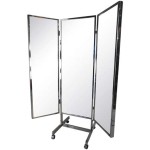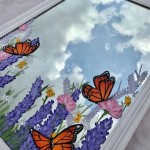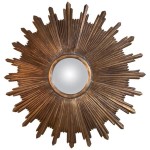Antique Metal Mirror Clips: A Guide to History, Styles, and Collecting
Antique mirror clips offer a glimpse into the artistry and craftsmanship of past eras. These small, functional objects served a crucial purpose while simultaneously adding a decorative touch to mirrors. Understanding their history, identifying various styles, and knowing how to incorporate them into a collection can be a rewarding pursuit for antique enthusiasts.
Key Points about Antique Mirror Clips
1. Functionality and Purpose
Mirror clips were essential for securing mirrors, especially before modern adhesive methods became commonplace. They held the mirror firmly in place within its frame, protecting it from damage and preventing slippage. This was particularly important for larger, heavier mirrors. The clips also contributed to the overall aesthetic appeal of the framed mirror.
2. Materials and Construction
Most antique mirror clips are crafted from metal, reflecting the durability and availability of the material. Common metals include brass, bronze, copper, and iron. Some clips feature intricate designs, while others showcase a simpler, more utilitarian aesthetic. The choice of metal and the complexity of the design often correlate with the mirror's overall style and value.
3. Victorian Era Popularity
The Victorian era (1837-1901) witnessed a surge in the popularity of decorative mirrors. This era embraced ornate designs and elaborate craftsmanship, influencing the style of mirror clips. Victorian-era clips frequently feature intricate floral motifs, scrolls, and other decorative elements. They often incorporated materials like porcelain or cut glass for added embellishment.
4. Art Deco Influence
The Art Deco movement of the 1920s and 1930s brought about a shift towards geometric designs and streamlined aesthetics. Mirror clips from this period often exhibit clean lines, symmetrical patterns, and a focus on functionality. Materials like chrome and nickel silver gained prominence, reflecting the era's embrace of modern materials and industrial design principles.
5. Identifying Antique Mirror Clips
Identifying the age and origin of antique mirror clips requires careful examination. Patina, the natural aging of metal, can indicate the clip's age. Wear and tear, such as scratches or tarnish, can also suggest historical use. Examining the clip's construction techniques, design motifs, and materials can provide further clues about its origins. Consulting antique guides and expert appraisers can assist with accurate identification.
6. Styles and Designs
Antique mirror clips exhibit a wide range of styles and designs, reflecting the evolving aesthetic preferences of different periods. Some common styles include: *
Serpentine Clips:
These clips feature a flowing, S-shaped design and were popular during the Victorian era. *Rosette Clips:
Characterized by a circular or floral shape, rosette clips often incorporate intricate details and embellishments. *Geometric Clips:
Influenced by Art Deco and Modernism, geometric clips emphasize clean lines and symmetrical shapes. *Figural Clips:
These clips depict figures, animals, or other decorative motifs and can be highly collectible. *Simple, utilitarian clips:
Often found on more basic mirrors, these clips prioritize function over elaborate decoration.7. Collecting and Restoration
Collecting antique mirror clips can be a rewarding hobby. Collectors often focus on specific periods, styles, or materials. Acquiring clips from reputable antique dealers, auctions, and estate sales ensures authenticity and provenance. Restoration of antique mirror clips should be approached with caution. Over-cleaning can damage the patina and diminish the clip's value. Consulting a professional conservator is recommended for significant restoration work.
8. Incorporating into Decor
Antique mirror clips can be incorporated into modern decor in various ways. They can be used to secure mirrors in their original frames or repurposed for other decorative applications. For example, clips can be used as decorative accents on picture frames, jewelry boxes, or other furniture pieces. Their unique designs and historical significance add a touch of vintage charm to any space.
9. Value and Appraisal
The value of antique mirror clips depends on several factors, including age, rarity, condition, material, and design. Clips from prominent periods or with unique designs can command higher prices. Condition plays a significant role in determining value, with well-preserved clips generally being more desirable. Consulting a qualified antique appraiser can provide an accurate assessment of a clip's value. Documented provenance, such as previous ownership history or auction records, can also enhance a clip's value.

Mirror Mounting Brackets Steel Set Of 2 With Brass Finish Singapore

Antique Mirror Mounting Brackets Brass Clips Drop In Vintage

Vintage Mirror Clips With 10 Pc Dresser

Zenith Mirror Fixing Claw Type Clip 4 Pack

Polished Brass Face Fixing Mirror Clips 4mm

Mirror Clips

Vintage Clip On Side Rear View Mirror Chrome Metal Drip Rail Set Car Auto

Steel Mirror Swivels Paxton Hardware

Mirror Clips Hometalk

Ook 20 Lb 1 2 In Steel Mirror Support Hangers Pack 50233 The Home Depot








